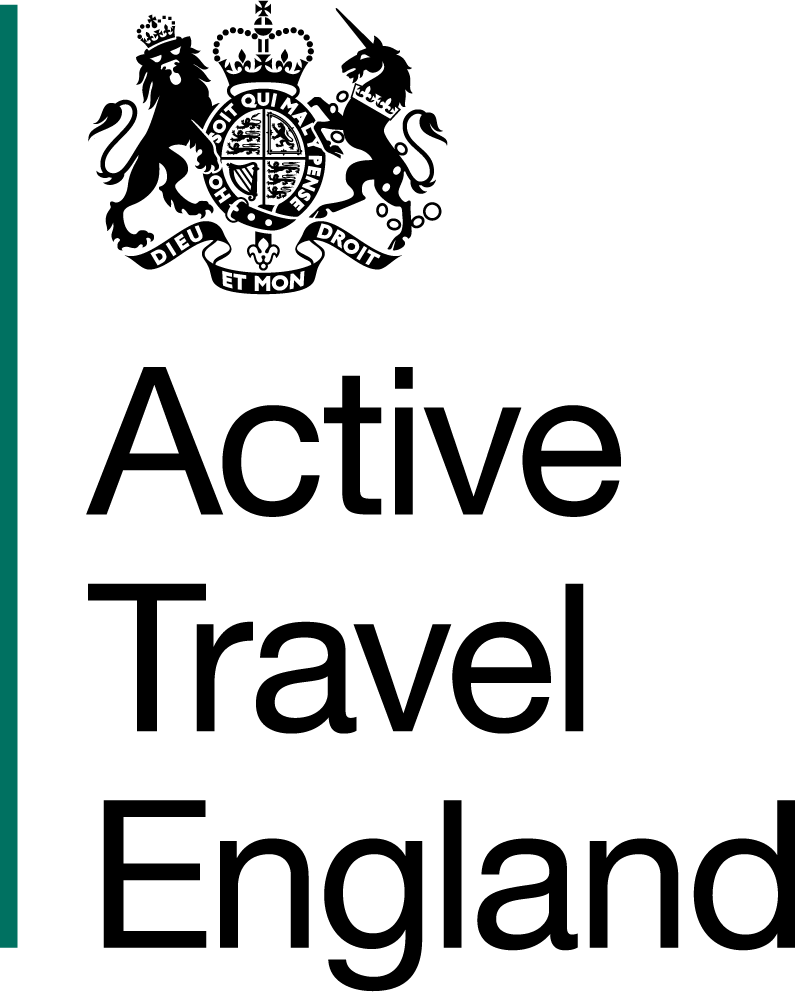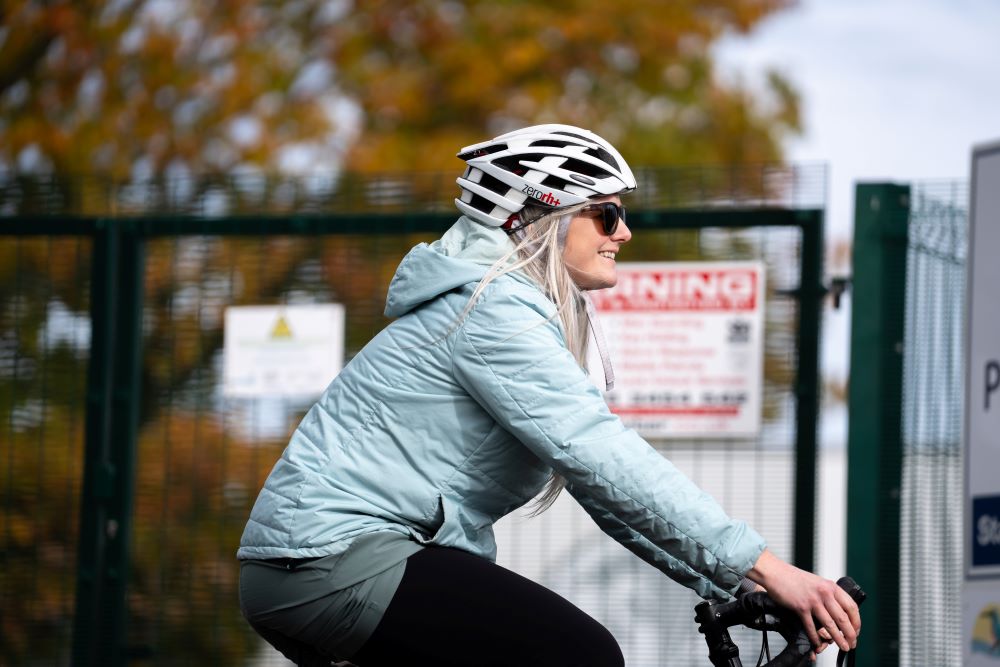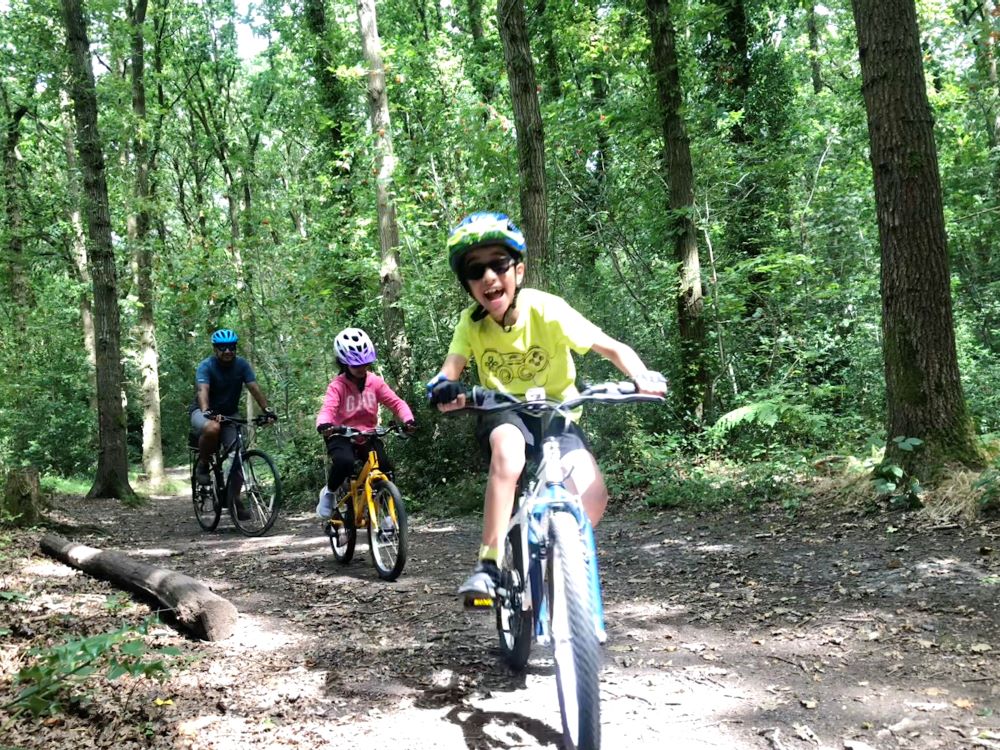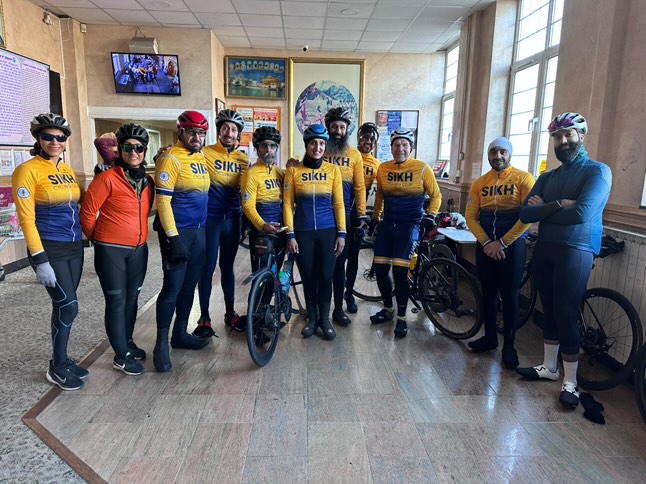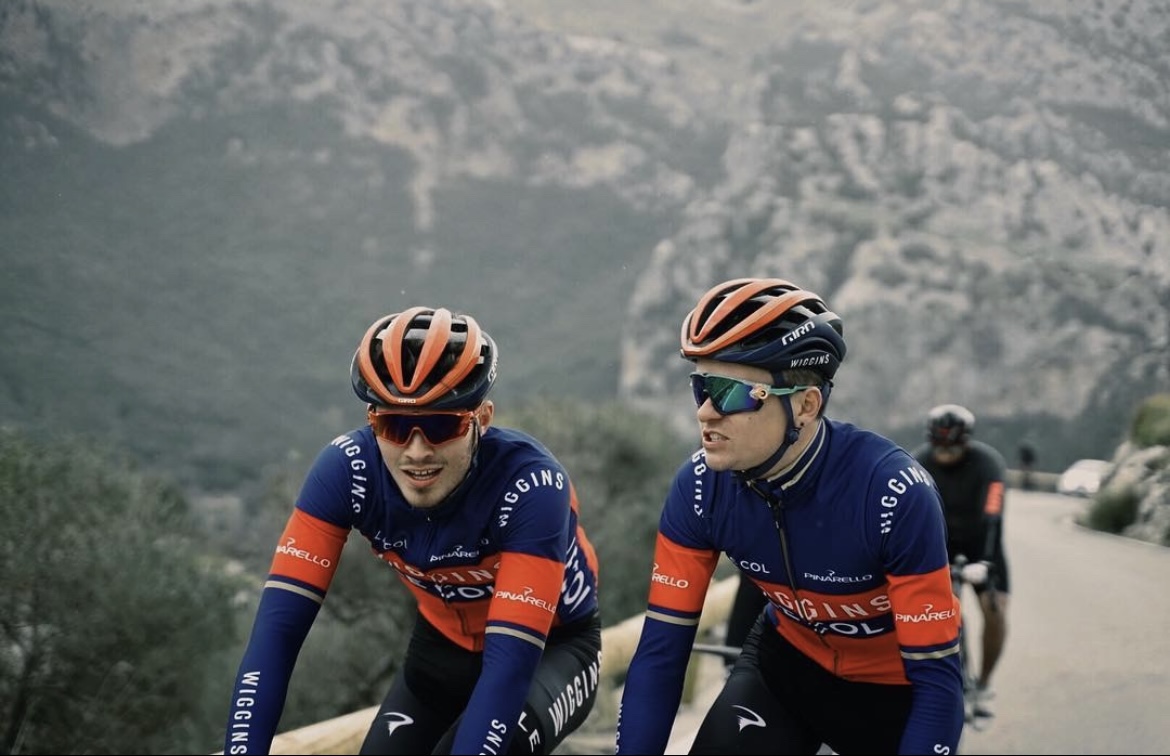Rosie’s story
Rosie Downes, who works for Bikeability, wasn’t completely confident when she started cycling again as an adult, but with some training and practice she now cycles all the time!
“I passed my cycling proficiency when I was a child, but didn’t cycle much as a teenager. By the time I went to university in London I hadn’t thought about cycling in years. Every day, I took the bus to university. My landlord Richard cycled to work. He complained about the Greenwich foot tunnel lifts being out of order a lot, but he seemed to enjoy it. And he didn’t complain nearly as much as I did about the bus. ‘Why don’t you just get a bike?’ he said.”
Getting back on a cycle
“I found a slightly battered Raleigh Pioneer on Freecycle, and set off to Islington to pick it up, with the intention of riding it home again. ‘I’ll just go the same way as the bus,’ I thought. ‘What could possibly go wrong?’”
Cycling in a city can be daunting, though, and Rosie’s first cycle trip in a while was not all plain pedalling!
“I’ve since climbed Alpe d’Huez on a tandem, ridden 200 miles solo on a fixed gear bike, and cycled across Spain, but that first trip across London remains one of my most memorable rides. It swiftly became apparent that I didn’t know how to ride in traffic, at rush hour. I don’t mind admitting that after I finally got the bike home, I was too scared to go out on it again.”
Trying again
“But I was determined, and that bus journey was still rubbish. I read about safe cycling. I practised on quiet roads. I volunteered for London Cycling Campaign, then ended up working for them, where I had cycle training. My confidence grew. I knew where to position myself in the road, and how to avoid hazards. I learnt routes that felt like secrets. And as my confidence grew, I fell more in love with cycling.
I now work for Bikeability, because learning to cycle safely and confidently genuinely changed my life. I can’t recommend it highly enough!”
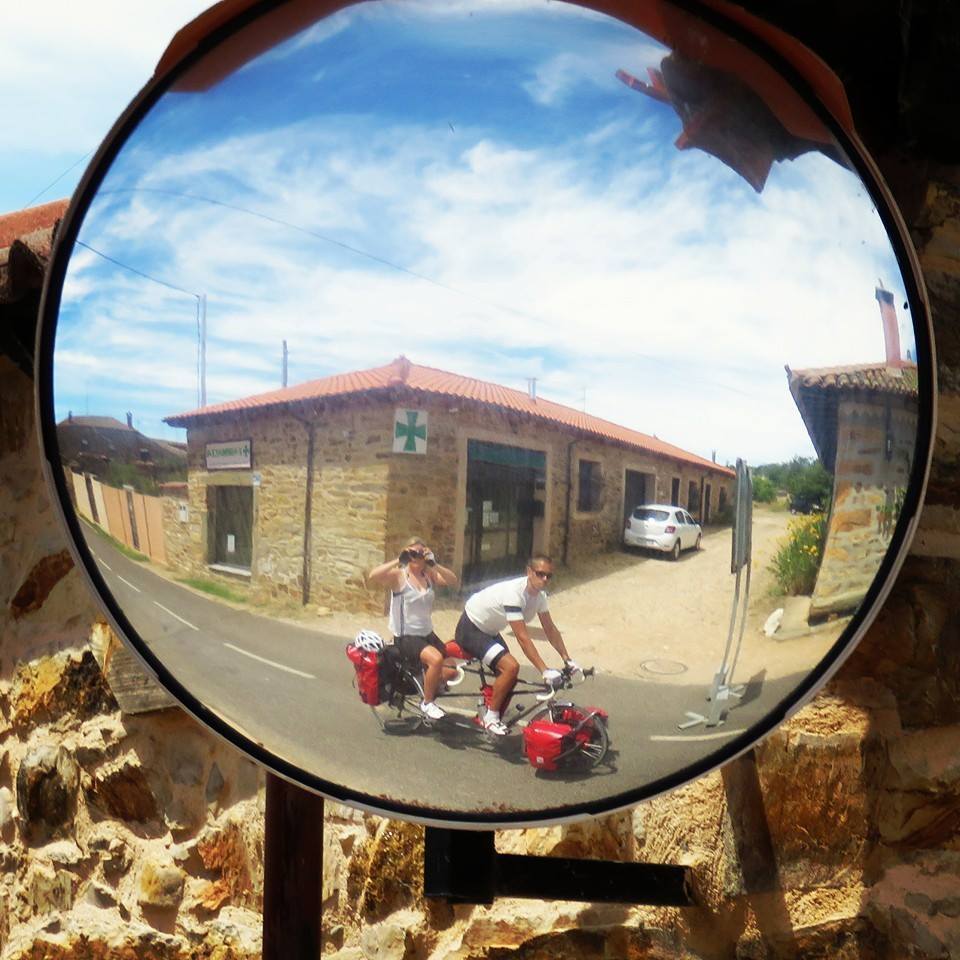

“Learning to cycle safely and confidently genuinely changed my life. I can’t recommend it highly enough!”
Rosie Downes
Ollie’s story
Oliver Dibsdale sustained a serious brain injury resulting in life changing disabilities affecting his mobility and speech after falling from his bike. Oliver, then aged 15, jumped on his cycle to see a friend. He took his cycle helmet, but didn’t wear it. On his journey his foot slipped off the pedal and he fell, hitting his head on the kerb. Oliver bitterly regrets his decision on that particular occasion to ride without a helmet.
An accident
“I have a very important message to share, about cycling safely, and how important a helmet is. It saddens me when I see kids cycling without any form of protection. Yes it might be just a cheap bit of plastic and does not look great when you wear one but I’ve learnt about how important it is to wear one after my tragic accident, which could happen to anyone.”
“I thought I did not look cool wearing a helmet and believed, because it was not a legal requirement to wear one, I didn’t have to. But not wearing my helmet was a fatal mistake and my life hasn’t been the same since that tragic day.”
Oliver feels guilty about the impact that his injuries have on his family, and for the amount of time they have had to spend caring for him and he very much wants to help other families avoid this fate by sharing his story. You can read more about Ollie’s story and his campaign here.
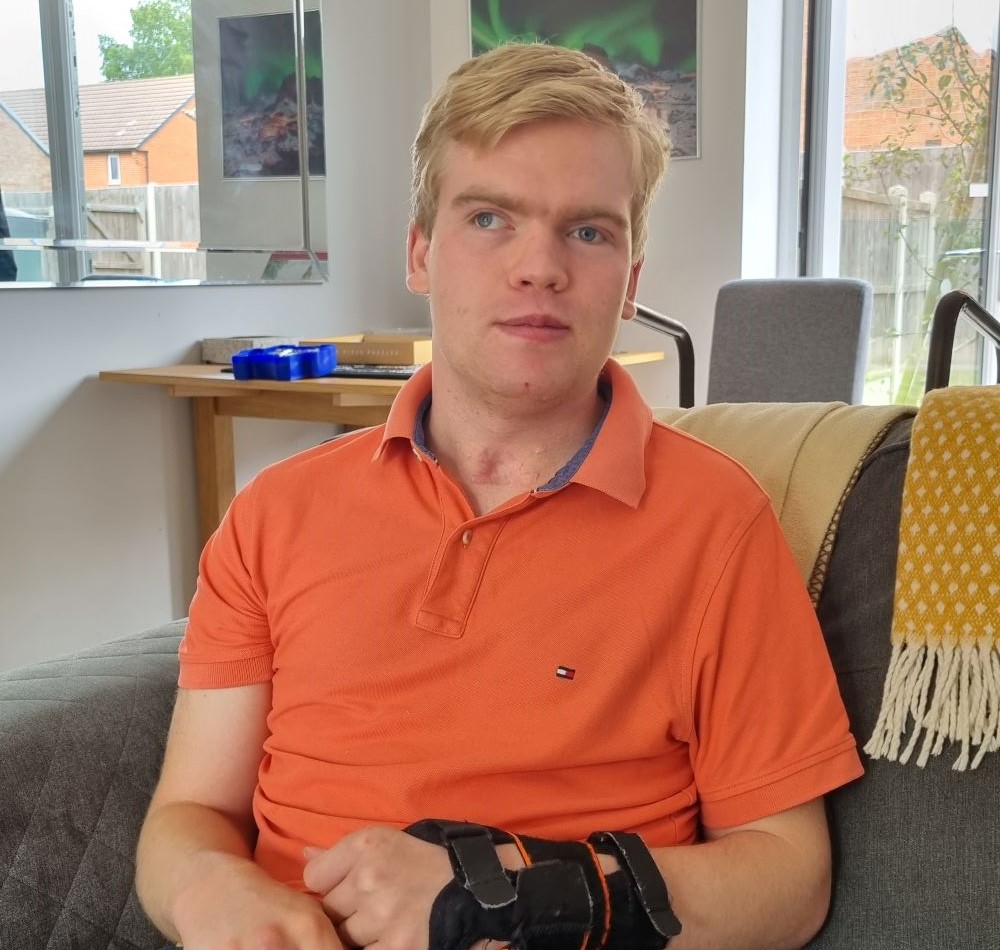

“Not wearing my helmet was a fatal mistake and my life hasn’t been the same since that tragic day.”
Oliver Dibsdale
Chris’s story
Chris Barltrop, a Bikeability instructor, came off his cycle earlier in the year when a driver passed way too close for comfort.
“We’d come through some traffic lights, and at that point, the road bends, but it also narrows quite significantly. And I had taken a more secondary position. Normally I’m primary through the lights but just because of the way the lane widens then narrows I ended up in secondary position.”
Road positioning
“I needed to check to move out, to negotiate the bend. And it was as I looked back, a couple of drivers had already passed me, so I was looking to fill the gap and the next car just happened to be right on my back wheel. So as I’m sort of looking and trying to move out [I saw the car] and I instinctively moved back in away from the vehicle because it was so close. I hit the curb and I went sprawling, sliding across the path. I cut the palm of my hand quite nastily, and I also cut my left knee deeply.
“It all happened really fast and just there’s no time to react and respond and get a car registration number or anything like that. I don’t wear a camera to capture information like that. Maybe I should, but I’m not one of these people that wants to protest against every driver.”
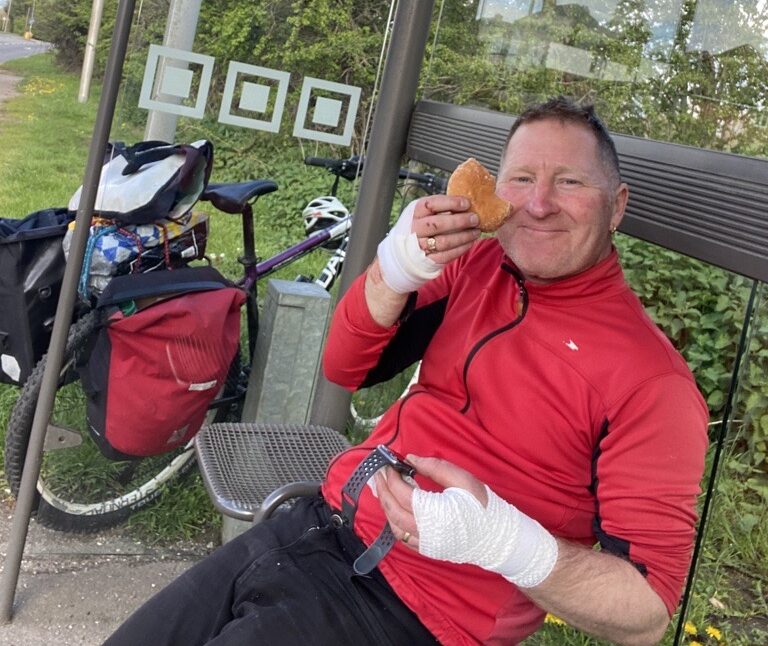

“The key is lots of looking around and good road positioning, knowing what road position you can adopt.”
Chris Barltrop
As a cycle instructor, Chris knows how important it is for riders to be aware of what other road users are doing.
“I always say to riders that I’m training, if you’re being passed, you don’t need to worry about the one that was right behind you or the one that was behind them. It’s the third or fourth driver that doesn’t know you’re there or hasn’t looked or planned that far ahead and hasn’t thought about how they’re going to get around you, but just follows the car in front of them who’s doing it.”
The accident hasn’t stopped Chris, and he was soon back in the saddle.
Cycling again
“I never questioned getting back on a bike. It was more a case of, when can I. I don’t know if I’m more cautious. I don’t think so. I don’t think for me it’s changed much. It’s what I do for a living. I have cycled a lot. My first aid kit has improved as a result!
“It’s a fact, isn’t it? Sometimes you come off. You’ve got to kind of get back on it and build up your confidence again.”
Chris has some tips for anyone who wants to feel more confident when cycling on the road.
“The key is lots of looking around and good road positioning, knowing what road position you can adopt. Because lots of people feel they should be over to the left. But you’ve got to understand a little bit about what you are allowed to be doing and be confident about doing it at the right time. You’ve got to behave like all the other road users. If you are changing lanes, it’s having that middle of one lane. Have a good look, get out into the next lane nice and early again, and be confident!”
Thank you to Rosie, Ollie and Chris for sharing your stories!
While cycling isn’t ever going to be completely without risk, whether you’re on the road or not, there are some ways you can make sure you are doing everything you can to cycle safely, including taking part in Bikeability training. Find out about cycle training near you.
